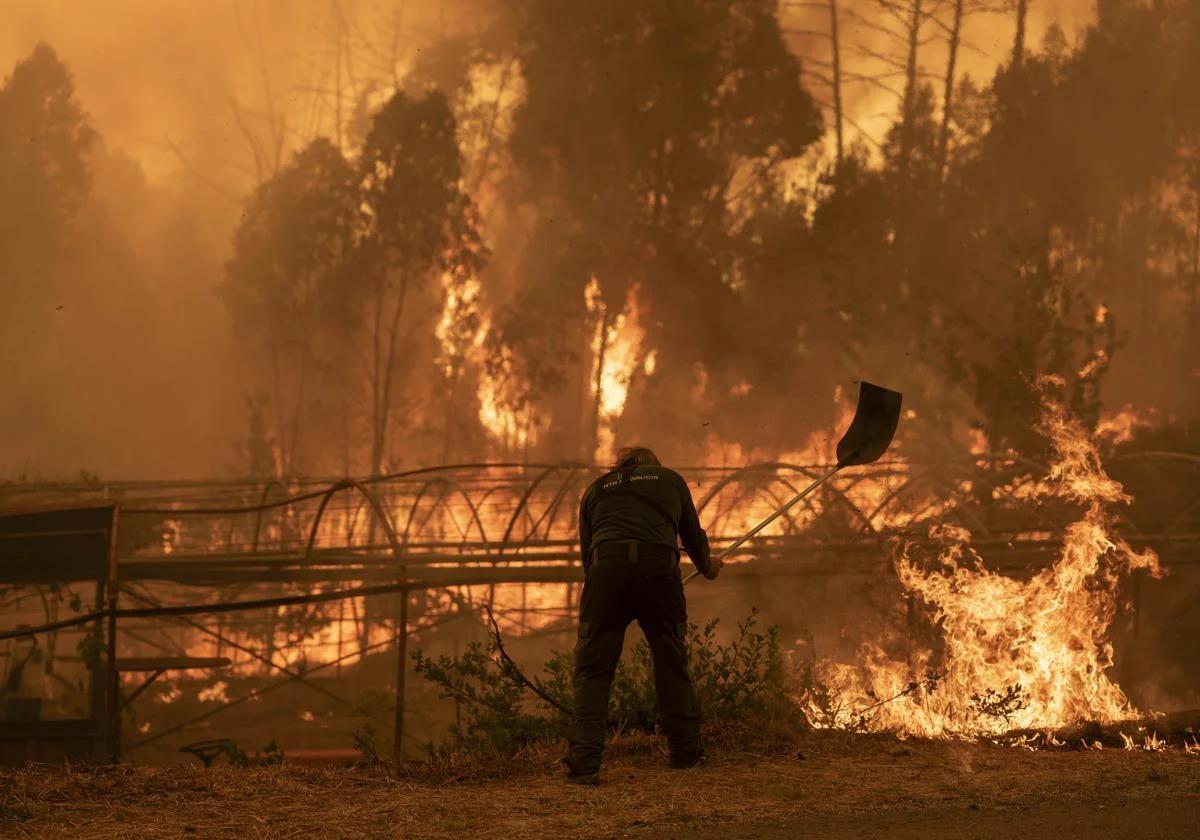More than 100 suspected arsonists face justice after wave of summer wildfires in Spain
Some of these forest fires are the result of the 14-day heatwave, occasionally sparked by lightning strikes, but most are caused by people
The west of Spain, from Galicia to Extremadura, has been burning for more than eight days now, with one fire after another, giving no respite to already overwhelmed firefighting teams. The flames scorched more than 115,000 hectares last week - the equivalent of twice the size of Ibiza - forcing the evacuation of more than 23,000 people at times. Some of these fires are the result of the extreme temperatures and drought caused by a 14-day heatwave and the thousands of lightning strikes from dry storms and wind, but most are caused by people: irresponsible, heartless or arsonists.
The authorities and the police, with a great deal of cooperation from the public, have declared war on arsonists. From 1 June to 14 August, the Guardia Civil and the National Police have investigated 110 people as suspects of setting forest fires: 22 have been arrested and 83 are awaiting a summons from the investigating courts.
More than a quarter of the suspected arsonists are in the Galicia region. Among them are the people presumed responsible for the fire in Oímbra, which has already burned more than 10,500 hectares and injured three firefighters in Orense. Another human-caused fire is the Puercas (Zamora) case, which has devastated 4,500 hectares. Six residents of Abejera were injured in the fire after they refused to evacuate their village.
The avalanche of fires has killed four people and seriously injured ten. It has led to the evacuation of more than 5,000 residents of five provinces and the confinement of 60 villages. In addition, it has complicated traffic on key roads. The flames and smoke have cut 12 roads, including the N-630 in two points of Cáceres, and forced state train operator Renfe and Adif railway infrastructure company to suspend high-speed train traffic between Madrid and Galicia for five days due to the enormous risk to trains and passengers on the border of Orense with Zamora. There are also temporary stoppages of medium-distance trains between Orense and Lugo.
The report on Saturday, 16 August, declared 20 active forest fires in five regions: Castilla y León, Galicia, Extremadura, Valencia and Asturias. Troops from the UME emergency military unit, with 1,400 soldiers and 450 vehicles, had to intervene in 13 of the fires. The four members of the unit who were injured on Friday are recovering well. The state meteorological agency's forecast maintains the extreme risk of wildfires until at least the end of today (Monday 18 August).
Last week, some fires were under control, while new ones were emerging, but the fire hotspot remained mostly unchanged: the triangle of Orense, León and Zamora, with the relevant additions of Salamanca, Ávila and Palencia and the increasing risk and damage in Cáceres.
Galicia is breaking all records, heading towards 45,000 hectares burned in August. The province of Orense is in flames from each direction, with more than 30 localities and a nursing home evacuated. On Saturday alone, there were ten serious fires, with the intervention of the Ume required in five of them. The fire that has been burning in Chandrexa since the weekend of 8 and 9 August has already burnt 16,000 hectares and become the largest in this region in history. The fires in Oímbra and A Mezquita have devastated 10,500 and 9,000 hectares, respectively.
The whole of western Castilla y León is also in the grip of the flames. There were 12 fires with risk to towns in Zamora, León, Salamanca and Ávila on Saturday. Although more than 2,500 residents were able to return to their homes after the Molezuelas fire was brought under control, more than 5,000 (3,000 from León, 2,000 from Salamanca and several hundred from Zamora and Ávila) remained evacuated on Sunday. Most of the evacuations on Saturday took place in El Bierzo, where the Yeres fire, which burnt the Las Médulas World Heritage site, remains intractable, and in Salamanca, where the fires in Cipérez and El Payo threaten several localities.
Extremadura has six major fires burning, but Cáceres bears the heaviest burden. The fire that started five days ago in La Jarilla has burnt some 6,000 hectares and is still out of control. It has forced the confinement of the inhabitants of several villages and is advancing alarmingly towards Plasencia. Another dangerous fire started in Casar, penetrated the Viñas de la Mata residential area and burnt 30 houses without the firefighting teams being able to prevent it.



Comentar es una ventaja exclusiva para registrados
¿Ya eres registrado?
Inicia sesiónNecesitas ser suscriptor para poder responder.
Necesitas ser suscriptor para poder votar.